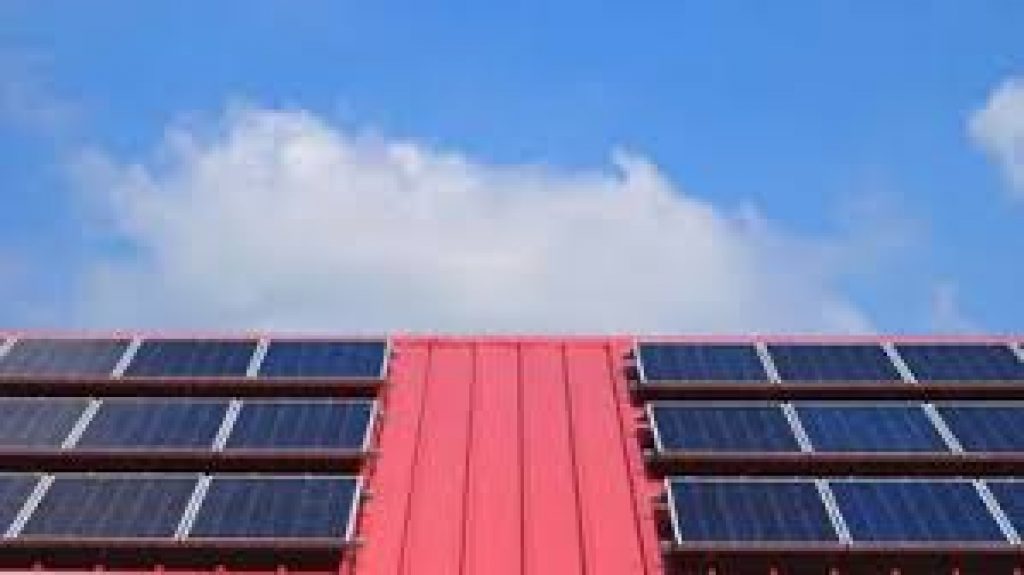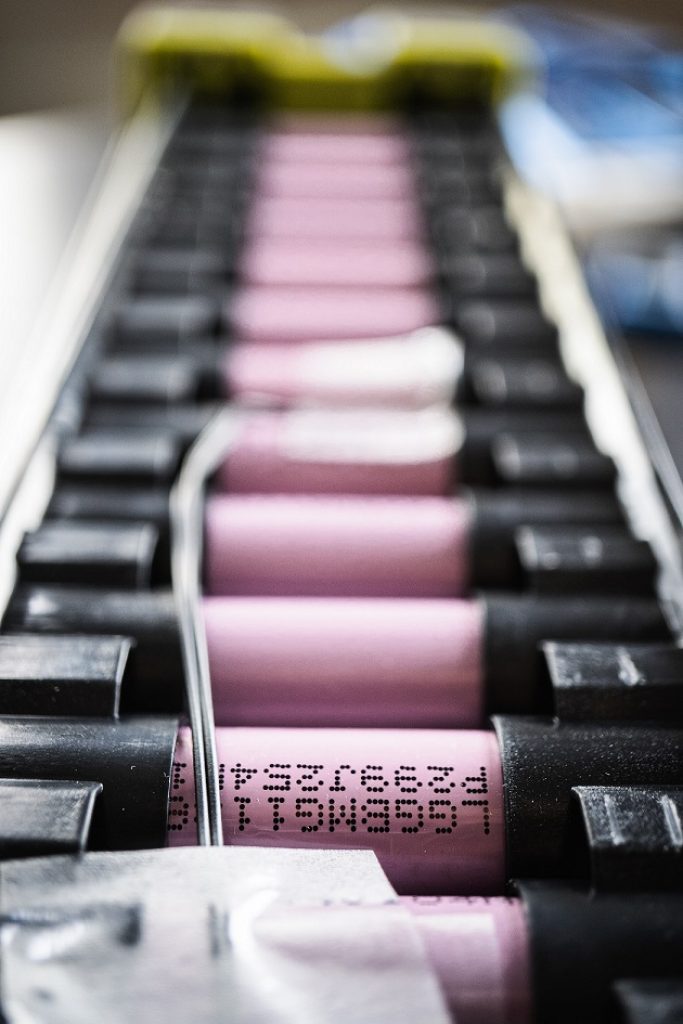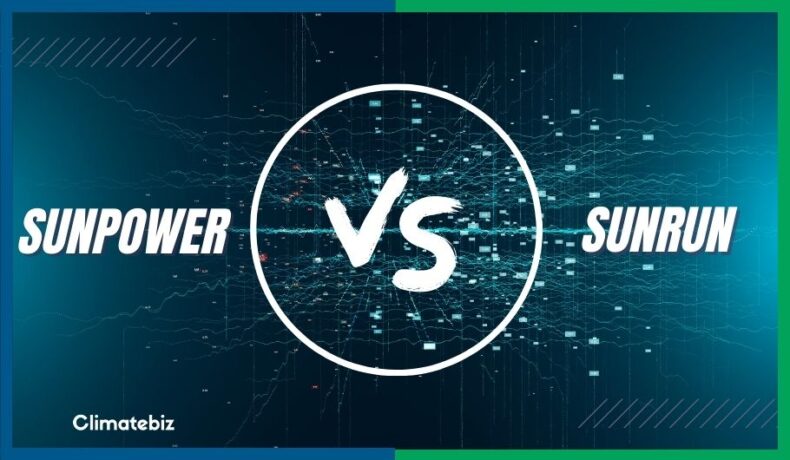
With the 400-watt solar panel, you can now produce more power with less space!
Solar Energy is fueled by innovation and constant research on efficiency and durability. The latest market standard, the 400-watt solar panel, is now available to all, and it’s a game-changer for residential solar systems.
Our deep dive into this PV module’s specifications will show you why 400 watts in one panel makes all the difference.
Affiliate Disclaimer
Table of Contents
What Is A 400 Watt Solar Panel Made Out Of?

Solar panels are devices that convert sunlight into electricity. They do so with few components and no moving parts, making them the most straightforward and robust energy production system ever.
Their deep blue or black color is due to their primary active material: silicon.
Let’s see how we came out with this material over the years.
Are you interested in sizing your very own solar system? Give our solar calculator a try.
A Brief History
Modern science can now describe the working principle of solar panels. It took the work of many great 20th-century scientists to fully explain how solar cells operate, most notably the multi-Nobel Prize awardee Albert Einstein.
Einstein
In 1905, Einstein theorized that light is a wave and particle-carrying energy. The photon (a light particle and a wave) is born, and together with it, the photoelectric effect — both explain the generation of electrons (electricity) when a particular metal is exposed to light (the sun).

You might think solar technology is old (more than one hundred years old). Still, from Einstein’s theory to the 2022 state-of-the-art 400-watt panel, generations of scientists worked together on one goal — improving efficiency.
Moving Forward
A solar panel’s efficiency is its power output over the power it receives from the sun.
Efficiency = Ppanel(W)/Psunlight(W)
Scientists looking for the most efficient material to achieve the photoelectric effect found that silicon was one of the best candidates. Later, manufacturers adopted silicon, which is easily accessible and available.
Solar Panel Elements
As an electricity generator, solar panels are by far the most straightforward systems; they are made up of few components with no moving parts, including:
- Solar Cells
- Encapsulant
- Aluminum frame
- Front window, self-cleaning glass
- Silver/Copper current harvester
- Regular DC wiring
The Basic Building Block
The basic building block of your solar panel is the solar cell. Multiple solar cells are electrically connected to produce the powerful 400-watt solar panel.
Each solar cell comprises a crystalline silicon wafer, stripped with conductive layers for electricity harvesting (generally a mix of silver and copper).
The assembly of solar cells is then encapsulated and framed with aluminum — a front self-cleaning window completes the system. The final product is a solar panel with 25 to 30 years of durability!
Most scientific research effort focuses on the active material. Thanks to years of research, silicon-based solar cells are reaching their maximum theoretical efficiencies, and scientists are looking beyond silicon for more efficient materials.
Related Reading: 5 Best SunPower Solar Panels You Can Buy
How Much Power Does A 400-Watt Solar Panel Produce?

If you think your 400-watt solar panel will produce 400W of power, you’d be right and wrong. Let’s take a closer look to understand why.
To obtain the instant output power (Watt) of your solar panel, multiply the maximum system voltage (Volt) and the amperage (Amp) of the panel.
Ppanel(W) = Ipanel(A)*Vpanel(Volt)
In the specifications of your solar panel, you’ll find the circuit current and circuit voltage at their maximum values.
Generally, a 400-watt panel will be 40 Volts and 10 Amps, equal to 400 watts! It’s, therefore, easy to understand that a 400-watt panel can produce 400 watts of power.
The question is, can it achieve 400 watts under real-life conditions?
Solar Irradiance
The above figures greatly depend on the sun’s irradiance (the power of sunlight).
The sun’s power is intermittent; it varies throughout the day. However, location also plays a role.
The industry has chosen a standardized test condition (STC) in a lab with direct sunlight irradiance power of 1000W/m2 at a temperature of 25°C to determine the power of their products.
The sun will reach this intensity in real outdoor conditions on a beautiful, clear day at the zenith (around noon).

As you can see, these ideal conditions are scarce in real life. Furthermore, other factors will influence power output, including:
- Outdoor temperature
- Exposure of the panel and local shadowing
- Cleanliness of the front window
Tips To Maximize Your Power Output

Expose your 400-watt panels to full sunlight; silicon solar panels love direct sunlight.
Ensure that you avoid local shadows (from trees or other buildings). Additionally, find the optimal angle to install them.
Cool your panels: natural cooling with a 15 cm space between your panels and the roof will do the job.
| Location | Optimal Exposition Angle |
|---|---|
| Northern hemisphere | 37° to 45° |
| Southern hemisphere | 30° to 35° |
Maximize efficiency: check your optimal tilting angle to maximize your production.
Clean them from time to time: soft water cleaning every month will improve the power output.
How Much Energy Does A 400-Watt Solar Panel Produce?
Actual energy production in kWh matters the most to residential users (more so than power output). After all, it’s what you’ll pay your electricity provider at the end of every month, right?
To obtain your energy production, multiply the instant power output by the time.
Epanel(kWh) = Ppanel(kW)*Time(hour)
What Can You Expect From Your 400-Watt Solar Panel On An Average Day?
Let’s look at the photovoltaic production potential map.
Thanks to a constellation of satellites scanning the earth continuously, we now have a clear view of the solar energy received across every part of the planet.

As you can see, your production potential greatly depends on your location. With the same system, you might produce three times more energy in South Africa than in the United Kingdom!
Let’s look at an example: in Los Angeles, California, the average energy production potential of a 1kW solar system is 1805 kWh/year, or 4.9 kWh/day.
With one 400W panel, your production potential is close to 2 kWh/day.
Evaluate your solar energy production potential here!
How Much Does A 400 Watt Solar Panel Cost?
The current price of a 400-watt solar panel is roughly $350, but it becomes virtually free after several years. What’s more, you will earn from it for 20+ years.
Continued Improvement
Nowadays, the solar industry is unique. Constant technological development enables products with lower prices, better efficiency, and durability.
In California, for example, electricity costs $0.2559 per kWh, as one 400W panel is expected to produce 730kWh per year, saving you $187 annually. Your panel is paid back in less than 2 years, with 20 to 25 more years of production in sight!
So over its entire lifetime, your solar panel will easily save you more than $4,500!
Related Reading: Top Tesla Powerwall Alternatives On The Market
How Many 400W Solar Panels Do You Need?
The answer here depends on where you live and how much electricity you use. The more electricity you use and the less sun your home receives, the more 400-watt panels you will require and vice versa.
Calculation Time
You can use this formula to figure out how many panels your home requires:

So let’s assume your home consumes about 890 kWh a month (the U.S. average).
You can find out how much your home consumes by checking your utility bill
Next, you need to use Global Solar Atlas to learn the peak sun hours of your location. Alternatively, you can use our peak sun hour data in the resources section of our menu.
Assuming you live in California, your home will experience about 5.2 peak sun hours daily or 156 hours a month.
Now that you have your data, you can implement the above formula:
(890 / 156) = 5,70 x 1000 = 5,700 watts.
Now you need to divide the total watts by the power rating of your solar panel; in this case, you already know it’ll be 400 watts.
5,700 / 400 = 14
This means a home in California consuming 890kWh a month will require x14 400-watt solar panels to offset electricity consumption.
Space Requirements
The average 400W panel measures 6.5 x 3.2, roughly 20.8 square feet.
Assuming your home required 14 solar panels rated at 400 watts, the roof would need 291 square feet of space for your solar array to be mounted.
What Can I Power With A 400-Watt Solar Panel?
A 400W solar panel can power a refrigerator for 24 hours!

Let’s See How
A 400-watt solar panel can power most of your everyday household appliances. The runtime of these appliances will largely depend on the battery associated with your panel.
The sun is a natural energy source — its power fluctuates greatly depending on the weather conditions and the time of the day.
Solar panels are usually paired with batteries that store energy and act as a buffer in case of cloud cover or power output reduction.
Batteries and an inverter will provide the clean and stable power your appliances require.

Energy Storage Is Critical
You’ve seen that a 400w panel can produce 2 kWh/day. Therefore, storing your energy in batteries is necessary for stable power output over time.
You’ll lose some energy through battery storage and inverting. However, you can still expect to use at least 85% of your initial energy production.
A medium-size refrigerator with a freezer will consume around 1.4 kWh/day, less than your 400W panel can produce in one day.
But remember, you’re working with natural elements here. So on a cloudy and/or windy day, your solar panel’s output won’t be enough to run the refrigerator for the entire day.
Examples
Below, you’ll find examples of appliance running times. All appliances are running on a 400W solar system paired with a 1kWh battery pack.
| Appliance | Hours Of Operation Per Day | Total Energy Consumption (Wh) |
|---|---|---|
| 5 Light bulbs (35 W) | 7 | 245 |
| 1 65-inch LED TV (120 W) | 4 | 480 |
| 1 Laptop (70 W) | 4 | 280 |
| 2 Smartphones (20W) | 2 | 40 |
| 1 Electric fan (40W) | 5 | 200 |
| Total | 1245 Wh |
Here is a list showing the power consumption of typical household appliances.
How Many Batteries Do I Need For A 400 Watt Solar System?
A 1kWh lithium battery pack is the best partner for your 400-watt solar panel.
Two steps will help you size your battery system:
- Know your energy production capacity
- Estimating your energy consumption
A battery pack and inverter are essential. Together, these components smooth out your solar panel’s rough energy production curve and help store energy.
The inverter will convert the Direct Current (DC) of the batteries into Alternative Current (AC) used by your appliances. This process allows you to store your energy and use it at night or during unfavorable weather.
In California, a 400W solar system will produce 2 kWh/day on average. Thus, a 1kWh storage capacity is adequate with 400W solar panels.
At the end of the day, your battery will be full, giving you enough capacity to enjoy a relaxing evening with ample power!
How Long Will It Take A 400 Watt Solar Panel To Charge My Battery?
A full charge takes a couple of hours with a lithium battery but up to 12 hours for lead-acid batteries.
Forget about AGM, deep cycle, valve regulated, or other types of lead-acid batteries; they are all based on the same outdated technology and are not the best for solar charging.
Lithium batteries are your best choice.
Why Lithium Is King
Due to technological limitations, lead-acid batteries may require 12 hours (or longer) to reach full charge, whereas lithium batteries can be charged in just a few hours. They also exhibit a high tolerance towards sharp power input variations, e.g., when a cloud suddenly shadows your panels.
A long lifespan, lighter weight, and higher power output make these the game-changer we’ve been waiting for.
They might require a more considerable investment initially, but their durability and ease of use vastly surpass the lead-acid technology.
Don’t Forget
Your charging abilities depend on the instant power output of your 400-watt panel.
Maximize the circuit current and voltage by optimizing the exposition of your solar panel to direct sunlight.
Charging will be faster around noon (between 10 am and 2 pm) when solar irradiance is at its peak.
How To Make Your Own DIY 400-Watt Solar Kit
Have you ever dreamed of living off-grid, with the sun as your only electricity source?
All you need are four main components that’ll make up your DIY 400w solar kit:
- Solar panels for energy production (400-watt panel)
- Solar charge controller for smooth battery charging (MPPT type)
- Battery for energy storage (1 kWh, lithium type)
- Inverter for stable, usable AC (pure sine wave, 2 kW max. power)
Step 1: Panels
Purchase the latest 400W solar panels; they offer more power in a smaller space.
Step 2: Solar Charge Controller
Connect your solar panel to the solar charge controller. As per its name, the charge controller will regulate the voltage and intensity from your 400-watt panel to your batteries.
The Maximum Power Point Tracking (MPPT) solar charger is your best choice. It’s designed to maximize the power output of your solar panel at any time and in any condition.
Step 3: Battery Storage
Batteries store your solar energy. Remember, choose lithium batteries!
Lithium batteries are ideal for solar charging; they have a high tolerance to intermittent charging and are durable and lightweight compared to outdated lead-acid batteries. For a 400W system, a 1 kWh battery is best suited.
Step 4: Inverter
You could already use your energy from the battery; this will be direct current (DC), usually 12V or 24V. In that case, you can only power Direct Current (DC) appliances.
All home appliances use Alternative Current (AC, 220V, 50Hz). An inverter will convert the DC to AC.
For a 400W system, choose a 2kW pure sine wave inverter. It means that you will be able to power up to 2kW of appliances at the same time.
Grab Your Tools
1 mm2 electrical cables, fuse box, and you are on your way to an off-grid experience!
How To Maintain Your 400-Watt Solar Panel
All you need to do is clean the front window of your panel with clear water every month to remove the dust.

Every 3 years, you should visually inspect the mounting rails of your 400-watt solar panel.
That’s it; you are good to go for 25 to 30 years!
Can I Use A 400 Watt Solar Panel On My Boat?
Yes, you can. The average size of a 400W solar panel is around 79″ X 39″ X 1.4″; while they are relatively large, they can still fit on most family-sized boats that range between 20 to 30 feet.
However, most people tend to equip smaller-sized solar panels on their boats because boats have very awkward angles with varying amounts of open space. As such, you can space out smaller solar panels in a way that best suits the shape of your boat.
We’ve written an article that covers the 17 best solar panels for boats. You’ll notice that we often highlight the use of flexible solar panels. Unlike roofs, boats are generally designed with curved angles; this makes flexible mounting panels much easier than fixed ones.
In summary, you can use 400W solar panels on your boat. However, we recommend using smaller sizes unless your boat is over 30 feet.
Specifications Of A 400W Panel Explained (6 Most Important)
All solar panels have standardized specifications, but the abundance of technical terms and figures can be intimidating. But don’t worry; we’ve selected the most useful ones so you can easily choose your 400W solar panel.
Let’s explain their meaning with the example of a 400W solar panel from LG: LGNEON2 – 400W.
Source: LG
There are different specification categories, including:
- General data
- Certifications and Warranty
- Electrical properties (STC)
- Electrical Properties (NMOT)
- Temperature Characteristics
- Operating Conditions
- IV curve
- Dimension
- In the general data, you’ll find information such as the type of solar cells used to make the panel, the dimension, weight, frame material, color, etc.
- Certifications and warranties are often specified as quality guarantees. Nowadays, the standard warranty for a solar panel is 25 years (retain 80% of initial efficiency). You will, however, also come across 30-year warranties.
- There is a standardized procedure referred to as STC (standard test condition) to measure the electrical properties of panels so that every panel can be compared.
- Recently, the NMOT (Nominal Module Operating Temperature) and NOCT (Nominal Operating Cell Temperature) procedures were introduced to better reflect the impact of temperature on electrical performances.
- Therefore, you’ll find electrical properties as STC and NOCT/NMOT.
- Temperature Characteristics reflect the changes in electrical properties such as power output when the surface temperature of the panel increases.
- The Operating Conditions are also indicated so you would know the operating limits of your system in terms of temperature, wind speed, and the number of panels connected.
- The IV curve describes the electrical outputs of the solar panel (amps/volts) at different solar irradiance (from low light to full sun).
- Finally, you will find a schematic representation of the solar panel with its dimensions.
6 Of The Most Important Specifications For A 400W Solar Panel
- Maximum Power (Pmax) at standard conditions (STC)
- MaxPowerPoint Voltage (Vmpp)
- MaxPowerPoint Current (Impp)
- Temperature coefficient Pmax [%/°C]
- Module Dimensions
- Warranty
- The maximum power (Pmax) is the ideal power output of your solar panel, in this case: 400W.
- The Vmpp (Voltage at Max Power Point) and the Impp (Current at Max Power Point) are the maximum voltage/intensity that your solar panel can reach under ideal conditions (STC). Those two values are essential to calculating the electrical specifications of your solar panel array (when connecting multiple panels).
- Pmax [%/°C], also called temperature coefficient, shows the power loss for each increase in degree °C. For example, with a Pmax of -0.36, the power output is reduced by 0.36% for each °c rise above 20°C. This is significant as the temperature of a solar panel can reach 60°C (power loss of more than 14%).
- The module dimension tells you if the solar panel can fit on your dedicated area (rooftop, ground-mounted, boat, RV, etc.)
- Finally, look at the warranty; 25 years is now a standard.
Final Thoughts
Solar panels are one of the best energy production technologies humankind has ever created — they are virtually maintenance-free and have a long life span!
Combined with an ever-decreasing buying price, this is the most attractive energy production device for residential and industrial use today.







